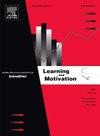Crocin facilitates the effect of fear extinction on freezing behavior and BDNF level in a rat model of fear-conditioning
IF 1.7
4区 心理学
Q3 PSYCHOLOGY, BIOLOGICAL
引用次数: 0
Abstract
Posttraumatic stress disorder (PTSD) is a common neuropsychiatric disorder that develops after a particular physical or psychological trauma. In preclinical studies, fear conditioning method is used for the induction of PTSD-like model in rodents. Extinction learning, as a process in which a new memory trace is created and replaced with previous traumatic memory, may improve PTSD-like symptoms. On the other hand, crocin (active component of Crocus sativus or Saffron) may have a role in the treatment of different cognitive and mental disorders. In this study, we evaluated the effect of crocin, extinction learning, and combination of both on PTSD-like (freezing) behavior, pain threshold, and brain-derived neurotrophic factor (BDNF) transcription level in a rat model of fear conditioning. Crocin administration (50 mg/kg, i.p.) was done immediately after fear conditioning (0.6 mA, 3 sec, repeated for three times with 30 sec interval, paired with a sound: 75 dB for 3 sec). Extinction learning was done 1 h, or 1 h and 24 h, or 1 h and 24 h and 48 h, after fear conditioning. The results showed that extinction learning attenuated PTSD-like behavior, and 2- and 3-day extinction learning increased BDNF transcription level. Crocin (2- and 3-day) increased pain threshold, with no effect on PTSD-like behavior and BDNF level. In conclusion, we suggested that crocin (alone) may have not therapeutic effects on PTSD-like symptoms. However, the combination of crocin and extinction learning may lead to a greater effect on PTSD-like symptoms than extinction learning (alone); although further studies are needed.
藏红花素促进恐惧消退对大鼠恐惧调节模型中冻结行为和BDNF水平的影响
创伤后应激障碍(PTSD)是一种常见的神经精神障碍,在特定的身体或心理创伤后发展。在临床前研究中,采用恐惧条件反射法诱导啮齿动物ptsd样模型。消退学习作为一种新的记忆痕迹被创造出来并被以前的创伤记忆所取代的过程,可能会改善ptsd样症状。另一方面,藏红花素(藏红花或藏红花的活性成分)可能在治疗不同的认知和精神障碍方面发挥作用。在这项研究中,我们评估了藏红花素、消退学习以及两者结合对大鼠恐惧条件反射模型中ptsd样(冻结)行为、痛阈和脑源性神经营养因子(BDNF)转录水平的影响。恐惧调节后立即给予西红花素(50 mg/kg, i.p.)(0.6 mA, 3 秒,重复三次,间隔30 秒,配以声音:75 dB, 3 秒)。在恐惧条件反射后1 h,或1 h和24 h,或1 h和24 h和48 h进行消退学习。结果表明,消退学习可减轻ptsd样行为,2天和3天消退学习可提高BDNF转录水平。藏红花素(2和3天)增加疼痛阈值,对ptsd样行为和BDNF水平无影响。总之,我们认为藏红花素(单独)可能对ptsd样症状没有治疗作用。然而,藏红花素与消退学习相结合对ptsd样症状的影响可能比消退学习(单独)更大;尽管还需要进一步的研究。
本文章由计算机程序翻译,如有差异,请以英文原文为准。
求助全文
约1分钟内获得全文
求助全文
来源期刊

Learning and Motivation
Multiple-
CiteScore
2.90
自引率
0.00%
发文量
53
期刊介绍:
Learning and Motivation features original experimental research devoted to the analysis of basic phenomena and mechanisms of learning, memory, and motivation. These studies, involving either animal or human subjects, examine behavioral, biological, and evolutionary influences on the learning and motivation processes, and often report on an integrated series of experiments that advance knowledge in this field. Theoretical papers and shorter reports are also considered.
 求助内容:
求助内容: 应助结果提醒方式:
应助结果提醒方式:


